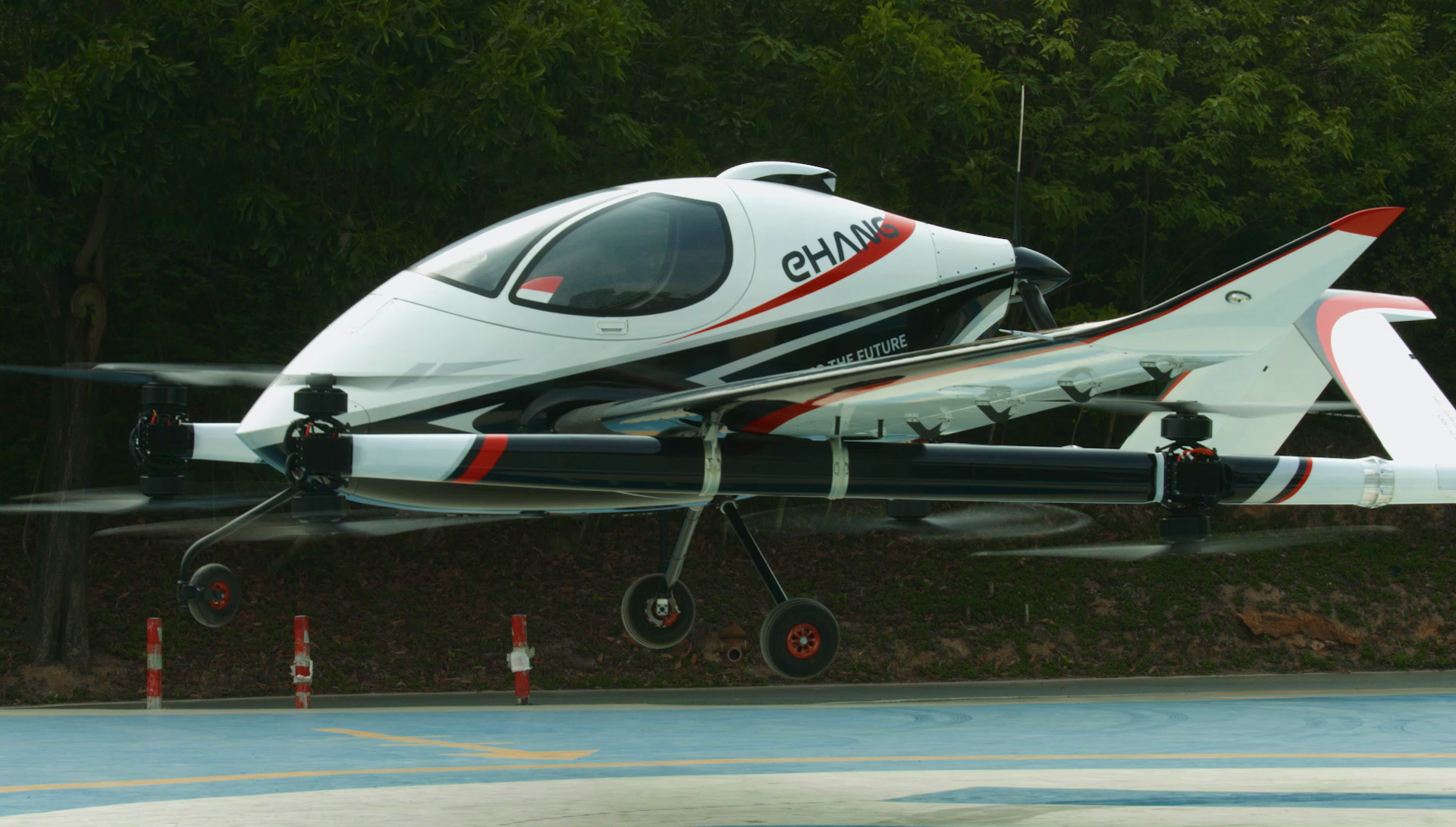Click Here to View This Page on Production Frontend
Click Here to Export Node Content
Click Here to View Printer-Friendly Version (Raw Backend)
Note: front-end display has links to styled print versions.
Content Node ID: 419030
EHang’s unveiling this week of its VT-30 Autonomous Aerial Vehicle confirmed its intention to bring a longer-range eVTOL aircraft to market. However, the Chinese company’s announcement late on May 25 provides little detail as to the technology behind the lift-plus-cruise design and the timeline for achieving type certification.
Photos of the two-seat VT-30 shows a small oval-shaped cabin with a single pusher propeller at the rear for cruise flight, a fixed-wing with winglets, and eight sets of electric motors and vertical-lift propellers fitted to a pair of parallel booms connecting the wing to a bow-shaped tail with a lifting rudder surface. EHang has not provided any details about the composition of the all-electric propulsion system that it says will support a range of up to 300 km (187 miles) or 100 minutes flight time.
The fuselage is visibly more streamlined than that on EHang’s existing two-seat, all-electric EH216 vehicle, which is limited to a range of just 35 km (22 miles). The company says the VT-30 will operate trips between cities and around regions in China, such as the Guangdong-Hong Kong-Macau area, the Yangtze River delta, and the Bohai rim.
According to EHang, the VT-30 prototype unveiled in Guangzhou has demonstrated a vertical takeoff and landing, with one of the photos released to media showing its landing gear just a couple of feet above the ground. The company has not said whether any longer flights have yet been made and would not provide any further details about the planned flight test program.
EHang chairman and CEO Huazhi Hu said that the VT-30 and the EH216 will be marketed in tandem for, respectively, inter- and intra-city passenger and freight services in China and other countries. The company would not say whether its product development plans will include larger-capacity aircraft that could carry more than two passengers but it made it clear that it remains fully committed to operations with no pilot on board.
Apart from three photos released online, the May 25 announcement provided little detail about the VT-30 beyond what was offered during an April 16 call for analysts to report financial results for 2020. While most other leading eVTOL aircraft developers now appear to accept that their vehicles must have the capacity to carry at least three or four passengers, EHang, either by choice or the limits of its technology, is sticking with a business model based on just two passengers.
During the analysts briefing last month, EHang said it will launch a “100 Air Mobility Routes Initiative” in China. It expects to start rolling out initial services over the next 24 months, presumably starting with the EH216, which has already flown extensively. The company also has indicated that it intends to develop another smaller autonomous model designated the VT-10.
EHang provided no further update on the progress of the EH216’s type certification campaign. The process is now being overseen by a team appointed by the Civil Aviation Administration of China.
On early news of the VT-30 announcement, EHang’s share price on New York’s Nasdaq stock market increased by just under a percentage point to close at $22.53, indicating a market capitalization of $1.23 billion. This is far below the $124.09 price for the stock just days before short-selling advocate Wolfpack Research published a highly contentious report claiming that EHang has misled the market about its prospects. EHang has aggressively denied these allegations and has said it is taking legal action against Wolfpack.
